Monroe County History: The Civic Improvement Society cleaned up Monroe
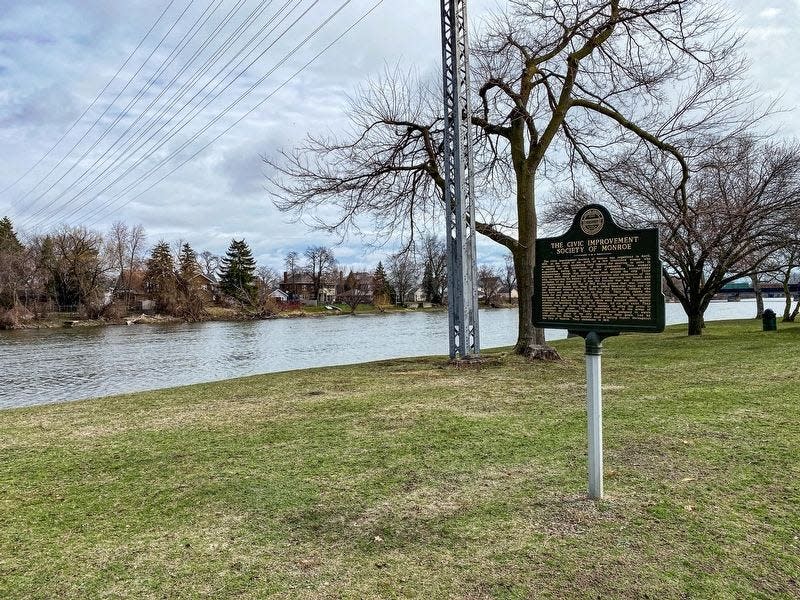
Last year during Women’s History Month, I wrote about the good works of the Civic Improvement Society (CIS) of Monroe, which existed from 1901 to 1914, according to the article written by Joanna V. Brace entitled “The Power of Porch Talks: The Civic Improvement Society of Monroe, Michigan, 1901-1914” – which was published in the Fall 2001 edition of the Michigan Historical Review.
In the article, Brace profiles the CISs progressivist agenda to beautify Monroe, clean up garbage, purify water, and preserve Monroe history – among other civic causes and initiatives, including the early glimpses of women’s suffrage.
Today, I’d like to highlight some of their projects that remain visible today – including Soldiers and Sailors Park and numerous historical markers they sponsored.
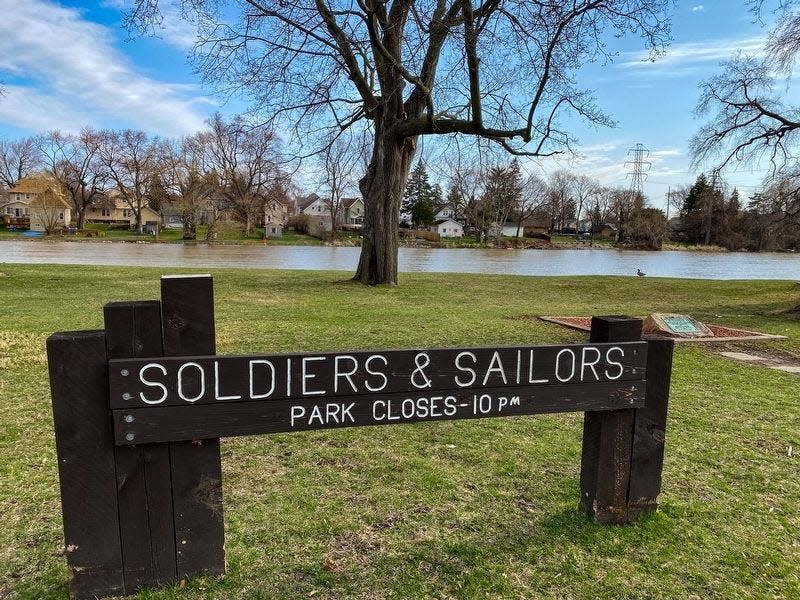
As I mentioned previously, Brace notes that most CIS members were college educated, past childbearing years, or unmarried women who also advocated for careers for women. While many in Monroe and elsewhere viewed the formation of women’s clubs as radical at the time, the ability to use their skills to identify local problems, spark public opinion, and fill service gaps not yet addressed by local urban governments (many of whom continued to operate by rules and policies used in rural and village settings) was noteworthy and set the stage for the creation of future women-led civic clubs dedicated to women’s rights and causes.
One of those enduring CIS projects was to develop Soldiers and Sailors Park. The half mile long riverfront parcel was purchase by the City of Monroe from the Ilgenfritz family (owners and operators of the Ilgenfritz Nursery Company) for $700, as described on the Michigan Historical Marker located on the property near the intersection of East Front Street and Jerome Street.
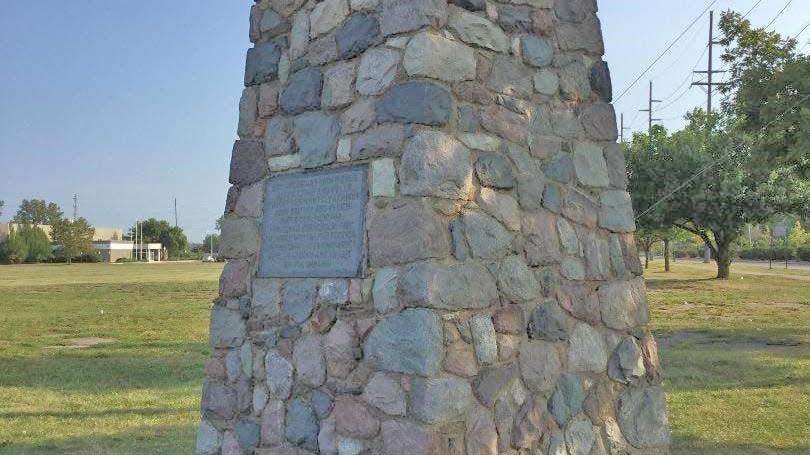
Originally known as Riverside Park (from 1909 to 1923), Soldiers and Sailors Park was renamed a week before the Custer Statue was moved from its original location in Loranger Square and remained until being moved to its present location in 1955. Civil War veterans used Soldiers and Sailors Park as a gathering place each Memorial Day during the 1920s and 1930s, which prompted placement of additional markers honoring Civil War veterans – the most recent placed in 2012 to honor the Civil War Sesquicentennial.
The CIS also placed numerous historical marker tablets throughout Monroe to honor various significant historical events or locations. One of these denotes the first location of the Navarre-Anderson Trading Post. This building was in this original location, at 39 East Elm Street near Trenton Street.

The Navarre-Anderson Trading Post served mercantile needs throughout the Battles of the River Raisin, and the preserved building still proudly displays its battle scars to prove it. Built in 1789, the Navarre-Anderson Trading Post is the oldest surviving wooden structure in Michigan. In 1972, the Navarre-Anderson Trading Post was moved approximately 4 miles west of town to its current location, in the Monroe County Historical Society's museum complex.
Not to be overlooked is the stone cairn (another name for a landmark or marker) considered the first official monument commemorating the Battles of the River Raisin. Erected in 1904 by the CIS, the Soldiers Monument Cairn, as it has been designated by the National Parks Service (who manages the River Raisin National Battlefield Park), was originally located on the south side of East Elm Avenue close to the River Raisin.
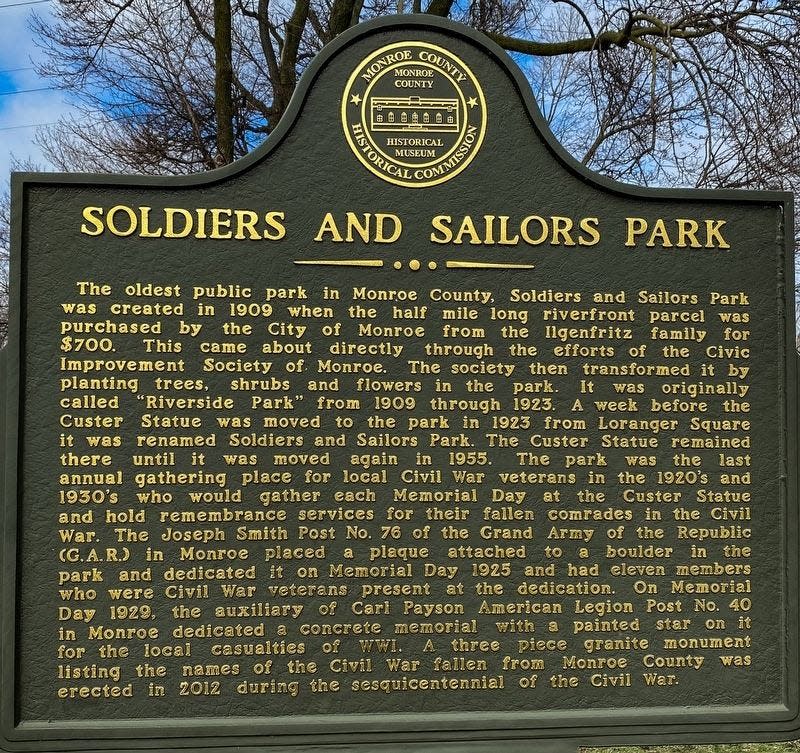
When the City of Monroe reclaimed the land where the River Raisin Paper Company once stood to establish the Riviere Aux Raisins Park (which not covers nearly 2 acres), the Soldiers Monument Cairn was relocated to the park at the corner of Elm Avenue and Dixie Highway in Monroe.
Tom Adamich is President – Visiting Librarian Service, a firm he has operated since 1993. He also is Project Archivist for the Greening Nursery Company and Family Archives.
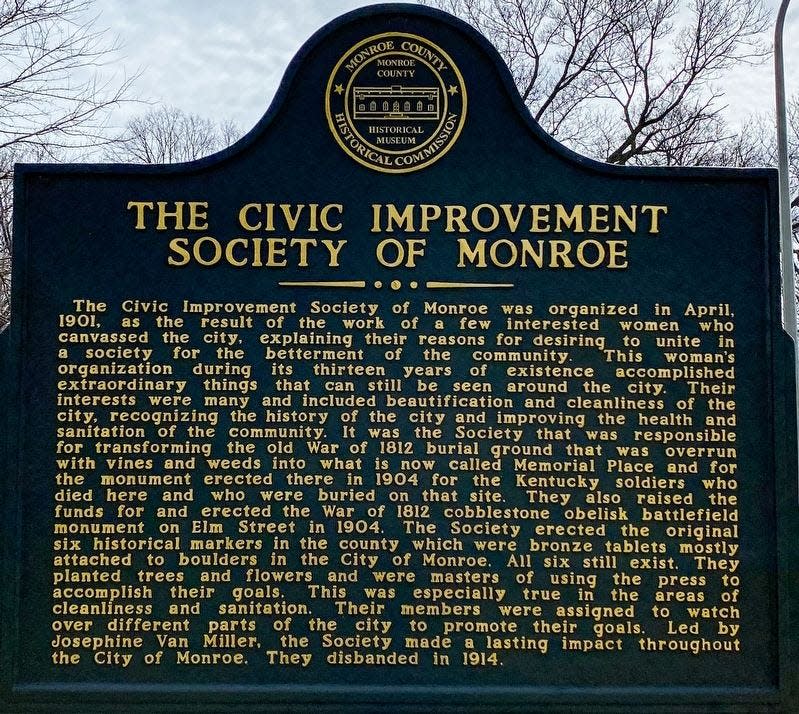
This article originally appeared on The Monroe News: The Civic Improvement Society cleaned up Monroe

